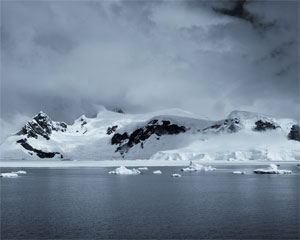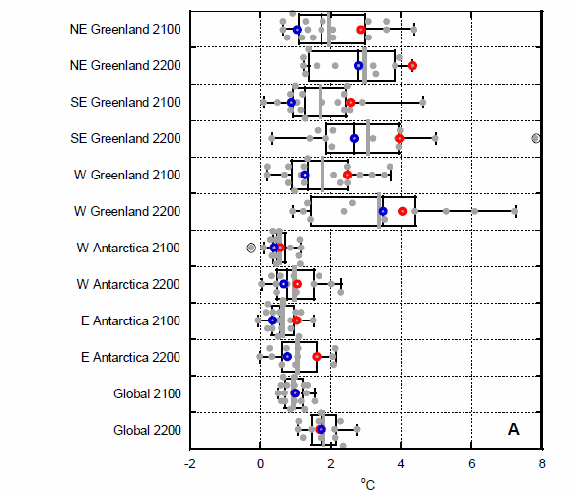July 3rd, 2011
Key Findings
- Future subsurface ocean warming can lead to increased ice flow and sea level rise.
- Climate models project subsurface ocean warming to be much larger in future than seen to date.
- Greenland subsurface warming projected to be up to twice the global average warming.
- Antarctica warming projected to be about half the global average.
- The projected warming in both hemispheres could lead to increased ice melt and substantial sea level rise.
Jianjun Yin, Jonathan T. Overpeck, Stephen M. Griffies, Aixue Hu, Joellen L. Russell, and Ronald J. Stouffer. Nature Geoscience – DOI: 10.1038/NGEO1189.
 Recent acceleration of Greenland and Antarctic outlet glaciers and ice flows is closely linked to ocean warming, especially in the subsurface layer. This land ice melt will cause sea level rise.
Recent acceleration of Greenland and Antarctic outlet glaciers and ice flows is closely linked to ocean warming, especially in the subsurface layer. This land ice melt will cause sea level rise.
We find that in response to an increase in atmospheric greenhouse-gas concentrations, the subsurface oceans (200-500 m) surrounding the two polar ice sheets both warm substantially more than has been observed thus far. Model projections suggest that the maximum ocean warming around Greenland will be double the global mean, whereas ocean warming around Antarctica will be only half the global mean (see figure).
A detailed evaluation indicates that the climate mechanisms behind the projected warming are likely realistic and capable of driving substantial increases in ice mass loss and sea level rise in the future. A more accurate simulation and projection of ice sheets and their interactions with the ocean and the atmosphere require refined resolution Earth system models, which resolve fast-moving ice flows and small-scale temperature changes.
The availability of these models in the future would significantly advance our understanding of ice sheet dynamics, and in turn improve sea level rise projections. Until then, these results suggest substantial dynamic ice sheet mass loss due to continued ocean warming should be considered a real possibility.



